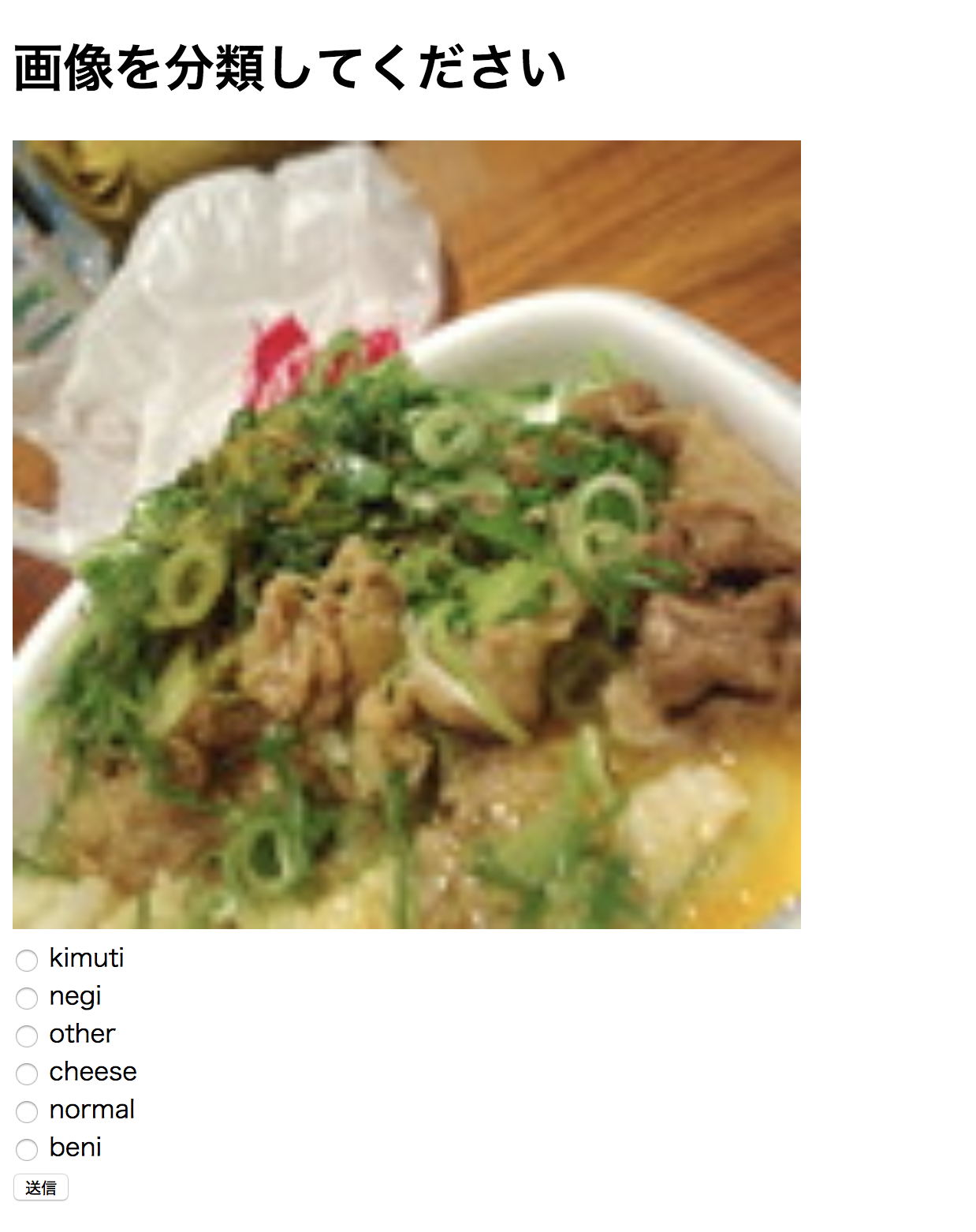復習がてら「Pythonによるスクレイピング&機械学習」の7章を読んでいる。
すると画像データのラベリングをする部分があった。
よく見るとphpで書かれていたのでまあせっかくだしpythonで書いてみようと思ったので作ってみた。
環境
- python 3.6.0
- Flask 0.12.2
ディレクトリ構造
.
├── labelling.py : Flaskファイル
├── static
│ ├── gyudon : まだラベリングしていない画像フォルダ
│ └── labeled : ラベリングした画像フォルダ
│ ├── beni
│ ├── cheese
│ ├── kimuti
│ ├── negi
│ ├── normal
│ └── other
└── templates
└── index.html
HTML
とりあえず雑なHTMLを書いてみる。
templates/index.html
<!DOCTYPE html>
<html lang="jp">
<head>
<meta charset="UTF-8">
<title>画像ラベリングサイト</title>
</head>
<body>
<h1>画像を分類してください</h1>
<img src="{{ img }}" style="width: 500px;">
<form action="{{ url_for('labelling') }}" method="POST">
<input type="hidden" name="img_path" value="{{ img }}">
{% if category_list %}
{% for category in category_list %}
<input type="radio" name="category" value="{{ category }}">
{{ category }}
<br/>
{% endfor %}
{% else %}
static/labeledにカテゴリーフォルダを作成してください。
{% endif %}
<input type="submit" value="送信">
</form>
</body>
</html>
表示されている画像を見て分類を行うformを作成。
フォームで送信するのは分類するカテゴリと画像のファイルパス
Flask
labelling.py
from flask import Flask, render_template, request, redirect, url_for
import glob
import os
import shutil
app = Flask(__name__)
@app.route("/")
def index():
# 画像ファイルパスを取得
img_path = glob.glob("static/gyudon/*")
# 分類するフォルダ名を取得
category_path = [os.path.basename(path) for path in glob.glob("static/labeled/*")]
return render_template('index.html', img=img_path[0], category_list=category_path)
@app.route("/labelling", methods=['POST'])
def labelling():
# 分類するフォルダパスを取得
category_path = os.path.join("static", os.path.join("labeled", request.form['category']))
# ファイルの移動
shutil.move(request.form['img_path'], category_path)
return redirect("/")
if __name__ == "__main__":
app.debug = True
app.run()
実行
感想
Flaskはファイル構造も容易であったり、一つのファイルで管理できるのがいいなぁと実感。
